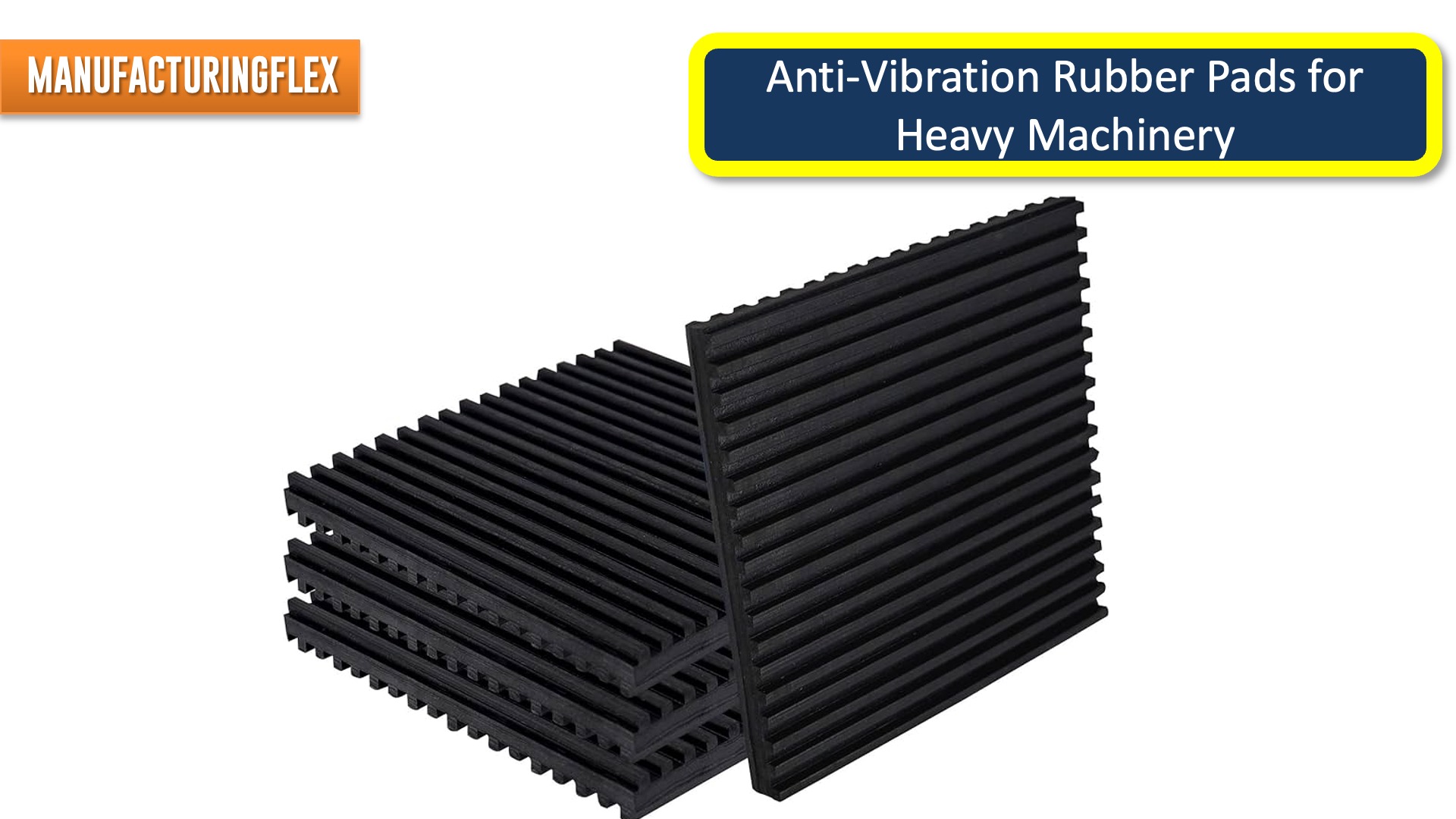Anti-vibration rubber pads are specialized materials designed to absorb and dampen vibrations produced by heavy machinery and equipment. These pads play a crucial role in maintaining equipment stability, reducing noise levels, and prolonging machinery life by minimizing wear and tear caused by vibrations.
Imagine standing next to a massive industrial machine as it roars to life, the ground trembling beneath your feet with each thunderous vibration. The sheer power and force of heavy machinery can be awe-inspiring, but these vibrations can also wreak havoc on the stability and performance of these colossal beasts. That’s where anti-vibration rubber pads come into play. These unassuming yet powerful pads act as a shield against the destructive forces of vibrations, ensuring smooth operation, improved efficiency, and reduced wear and tear on heavy machinery.
Understanding Anti-Vibration Rubber Pads
Contents
- 1 Understanding Anti-Vibration Rubber Pads
- 2 Types of Anti-Vibration Rubber Pads
- 3 Key Specifications and Performance Data
- 4 Benefits of Using Anti-Vibration Rubber Pads
- 5 Applications of Anti-Vibration Rubber Pads
- 6 Choosing the Right Anti-Vibration Rubber Pads
- 7 Frequently Asked Questions (FAQ)
- 8 Conclusion
Anti-vibration rubber pads are made from high-density rubber compounds that can effectively absorb vibrations and shocks. They are typically placed under machinery or equipment to isolate vibrations, preventing them from transferring to the floor or structure of a building. These pads are engineered to perform under a wide range of environmental conditions, supporting heavy loads while providing effective vibration isolation.
Types of Anti-Vibration Rubber Pads
There are several types of anti-vibration rubber pads, each designed for specific applications and machinery types:
- Neoprene Pads: Versatile and resistant to oils and chemicals, ideal for general industrial use.
- Nitrile Rubber Pads: Best suited for applications where oil resistance is crucial.
- Silicone Rubber Pads: Excellent for high-temperature environments.
- Natural Rubber Pads: Provide good vibration absorption for general purposes but have lower oil and heat resistance.
Key Specifications and Performance Data
| Type | Density (kg/m³) | Temperature Range (°C) | Vibration Isolation Efficiency (%) |
|---|---|---|---|
| Neoprene | 1300-1500 | -40 to +100 | 75-85 |
| Nitrile | 1200-1400 | -30 to +120 | 70-80 |
| Silicone | 1100-1300 | -50 to +200 | 80-90 |
| Natural Rubber | 1000-1200 | -50 to +70 | 60-70 |
Benefits of Using Anti-Vibration Rubber Pads
- Extended Equipment Life: By reducing vibrations, these pads minimize wear and tear on machinery components.
- Improved Worker Safety: Lower vibration levels lead to a safer work environment and reduce the risk of vibration-related injuries.
- Noise Reduction: Helps in significantly reducing noise pollution in industrial settings.
- Cost Savings: Reducing maintenance needs and downtime contributes to overall cost savings.
Applications of Anti-Vibration Rubber Pads
Anti-vibration rubber pads find applications in a wide range of industries:
- Manufacturing plants for machinery and equipment.
- HVAC systems to prevent vibration transmission.
- Automotive industry for engine mounts and suspension systems.
- Electronics for sensitive equipment and machinery.
Choosing the Right Anti-Vibration Rubber Pads
Selecting the appropriate anti-vibration rubber pads involves several considerations:
- Load Capacity: The pad must be capable of supporting the weight of the machinery without excessive compression.
- Environment: Consideration of the environmental conditions, such as temperature and exposure to chemicals, is crucial.
- Vibration Frequency: The pad’s material should be effective against the specific vibration frequencies produced by the machinery.
Frequently Asked Questions (FAQ)
- How do I know if I need anti-vibration rubber pads? If your machinery produces noticeable vibrations that cause noise, wear, or structural issues, anti-vibration pads may be necessary
- Can these pads be used for all types of machinery? Yes, but the specific type of pad should be selected based on the machinery’s weight, vibration frequency, and environmental conditions.
- Are anti-vibration pads difficult to install? Most pads are straightforward to install, but it’s important to follow the manufacturer’s guidelines for optimal performance.
Conclusion
Anti-vibration rubber pads are a cost-effective solution to protect machinery and improve the work environment by isolating unwanted vibrations. By selecting the appropriate type of pad and considering the specific needs of the machinery and its operating environment, businesses can significantly extend equipment life, enhance safety, and reduce operational costs. Whether for general industrial use, high-temperature applications, or situations requiring oil resistance, there is an anti-vibration rubber pad suited to meet the challenge.
